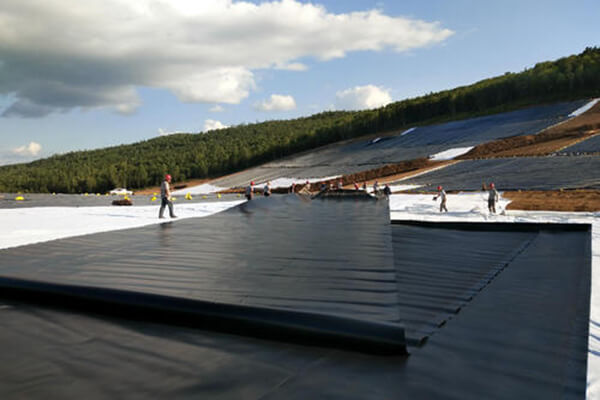High-density polyethylene geomembrane should be welded firmly
During the construction of high-density polyethylene geomembrane, the flat base of the bottom of the reservoir and the slope must meet the design requirements and the following requirements.
1. Before laying, the laying surface should be protected to make it fully meet the quality and safety requirements. When laying directly on the structural surface of civil engineering, the structure of the construction surface should be stable, the slope should be smoothly transitioned, and there should be no harmful debris within the vertical depth of 2.5 cm. When laying the next layer of geomaterials, ensure that the next layer of geomaterials The construction quality is qualified, and the surface is free of water and debris.
2. Reasonably choose the laying direction to reduce the joint stress as much as possible.
3. The laying tools must not impair the normal use function of geotechnical materials.
4. Arrange the position of each piece of material reasonably, and strive for the least joints.
5. The high-density polyethylene geomembrane shall be welded firmly, meet the requirements of strength and leakage prevention, and shall not sink or break locally. Geomembrane welding (bonding) joints should pass tests and inspections. There shall be no transverse joints on the slope with a slope greater than 10% and within 1.5m of the toe.

6. The overlap width shall not be lower than the corresponding connection standard.
7. When adjusting the lap width of the material during laying, the connection part shall not be damaged.
8. During the laying process, prevent any damage to the rock and soil materials due to loading and unloading activities, high temperature, chemical leakage, or other factors.
9. The mechanical equipment used for coil deployment must not cause obvious scratches on the geotechnical materials, and must not cause damage to the surface of the laid substrate.
10. The laying should be smooth and firm, and wrinkles should be minimized.
11. Ballast and anchoring should be carried out in time after laying. All geotechnical materials should be laid, connected, and anchored.
12. In order to ensure the stability of the anti-seepage structure of the reservoir slope, according to the actual situation, an anchor platform is set in the reservoir slope, and an anchoring groove is set in the anchor platform. The height difference of the anchoring platform should be determined in combination with the actual terrain.
